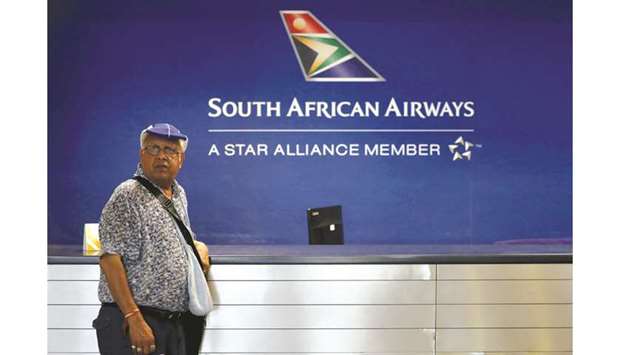South Africa’s government has hired a veteran business-rescue specialist to take charge of the state-owned airline in a renewed attempt to restore it to financial health and remove a burden on the nation’s finances.
Les Matuson and his team at Johannesburg-based Matuson & Associates will get 4bn rand ($273mn) in working capital from creditors and the government to keep South African Airways operating into 2020 – a move aimed at assuring passengers that their flights over the busy year-end season will take off as planned.
These are some of the most pressing issues facing SAA’s temporary managers:
Rationalise routes
The scaling back of SAA’s global network has been a fixture of previous restructuring plans drawn up to ease debt and stem persistent losses, which amount to more than 28bn rand over 13 years. Some routes have already been cut, such as those from Johannesburg to Mumbai and the Nigerian capital Abuja, but more drastic action is required, according to Mike Mabasa, chairman of the Air Services Licensing Council.
“Route rationalisation must be top of the agenda,” he said by phone. “SAA is bleeding cash on some routes – they are not able to get bums on seats.”
Cuts should primarily come from destinations outside Africa that are already well serviced by rivals, said Mabasa, adding that it can be cheaper to reach some international destinations via the Middle East than direct with SAA. That would leave the South African carrier to focus on a domestic service and compete better with Ethiopian Airlines Group in the rest of the continent.
SAA’s most recent restructuring plan, dated August 21, favours a reduction in frequencies rather than a full withdrawal, but also lays out more extreme scenarios where flights to cities such as Sao Paulo and Perth are curtailed. Its ex-Africa operation could then target North America – namely New York and Washington, DC – and Europe.
Optimise fleet
If routes are cut, the airline will have to pare back the size of its fleet, which comprises almost 50 Airbus SE jets. Aircraft will also need to be upgraded to reduce fuel spend and boost profit, with the replacement of aging A340 models with more efficient A350s already underway.
The first of four A350-900 aircraft was delivered early last month, which acting chief executive officer Zuks Ramasia said at the time was a step toward financial stability. SAA spokesman Tlali Tlali says Matuson will now decide how the fleet should be renewed.
“Using A350s on routes to Hong Kong and New York will see an immediate 20% to 25% saving just on fuel costs,” said Linden Birns, managing director of Plane Talking, a Cape Town-based aviation advisory service.
Job cuts
SAA’s surprise attempt last month to cut almost 1,000 jobs, or about a fifth of the workforce, accelerated the path toward bankruptcy protection after two labour groups embarked on a costly week-long strike. That’s likely to make Matuson wary of any immediate attempt to revive the plan, with union negotiations likely to take place instead.
Solidarity, which has about 280 SAA group staff among its members, had filed its own lawsuit to force bankruptcy protection before the government pre-empted the action with its own plan. Larger labour groups, such as the National Union of Metalworkers of South Africa, have said they back business rescue in principle but want to be involved in the process – objecting to not being consulted about the identity of the practitioner.
“The unions won’t be doing themselves any favours by pursuing further strike action,” said Mike Mabasa. “They should instead make progressive recommendations to the protector.”
Scrutinise finances
A key element of the work of any team of corporate recovery practitioners is to go through a distressed company’s finances, and that may be where some of the real SAA horrors lie. While financial statements for the year through March 2018 show losses holding steady at about 5.3bn rand, the carrier hasn’t yet submitted accounts for the most recent year.
Two years ago, auditor general Kimi Makwetu completed a review of SAA and found that – apart from mounting losses – the airline failed to properly record financial information and the value of assets such as planes and property.

A passenger waits to be served at the South African Airways customer desk at the O. R. Tambo International Airport in Kempton Park, South Africa (file). The scaling back of SAA’s global network has been a fixture of previous restructuring plans drawn up to ease debt and stem persistent losses, which amount to more than 28bn rand over 13 years.
